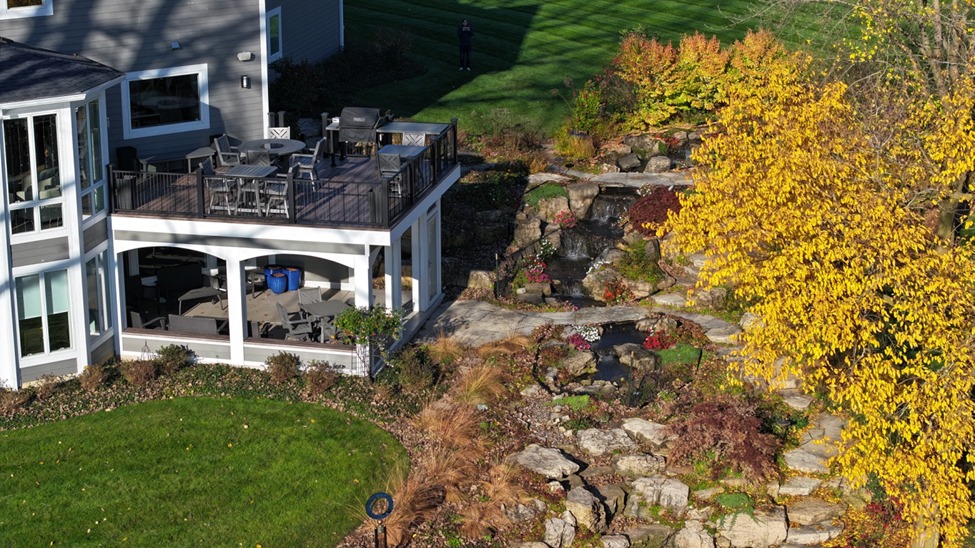Constructing a deck is undoubtedly one of the most effective improvements you can perform in order to increase your home’s curb appeal, spend quality time with family, and increase the overall value of the home. If you are planning a warm and cozy backyard getaway or simply need a spready area to host your friends, the kind of wood that you select for your decking is one of the most important factors that will determine the appearance and durability of your space. With so many choices, including affordable pressure treated lumber and expensive tropical hardwoods, deciding can be very stressful.
According to thelocal deck contractors Tacoma, when it comes to decking, not all types of wood are equal. Some are renowned for beauty, and some for being called ‘workhorses. Wood quality aside, price could really tip the scale towards a decision. On top of that, the state you live in, your comfort level concerning the attention and effort you need to put into maintenance, budget restraints, the climate you live in, and the aesthetics you need will factor into your style.
This guide will navigate you through various pros and cons of the most prominent types of decking wood, as well as tips and tricks for selecting the best option for your project. Understanding the options available to you, whether you’re a DIY fan or collaborating with a contractor, is the primary step to constructing a lasting and beautiful deck.
- Pressure-Treated Pine
Best for: Budget-friendly decks
Pressure-treated (PT) pine is the most common decking material in the U.S. It’s affordable, readily available, and resistant to insects and rot due to a chemical treatment process.
Pros:
- Low cost
- Resistant to decay and insects
- Easy to work with
Cons:
- Prone to warping and cracking if not maintained
- Requires regular sealing or staining
- Lifespan: 10–15 years with proper maintenance
- Cedar
Best for: Homeowners who want a natural, rustic look
Cedar is naturally resistant to rot and insects thanks to its natural oils. It’s lightweight, easy to work with, and looks beautiful right out of the gate.
Pros:
- Naturally resistant to decay
- Doesn’t easily warp
- Attractive grain and rich color
Cons:
- Softer wood – can be scratched or dented easily
- Needs sealing every few years
- Lifespan: 15–20 years with maintenance
- Redwood
Best for: Premium natural appearance and durability
Redwood gives a beautiful, vivid color along with a straight grain, making it highly sought for luxury outdoor areas. Similar to cedar, it possesses natural oils that assist in repelling both insects and moisture.
Pros:
- Gorgeous, rich color
- Resists shrinking and warping
- Long-lasting with proper care
Cons:
- More expensive
- Requires sealing to maintain color and durability
- Lifespan: 20–25 years
- Ipe (Brazilian Walnut)
Best for: High-end, ultra-durable decks
Ipe is a type of wood that is classified as an exotic hardwood due to its enduring toughness and heavy weight. It is also fire resistant, does not rot easily, and is insect proof; qualities that make Ipe excellent material for luxurious decks that last a long time.
Pros:
- Extremely durable (up to 40+ years)
- Low maintenance
- Stunning dark brown hue
Cons:
- Expensive
- Difficult to cut and drill (you’ll need special tools)
- Requires annual oiling to maintain color
- Lifespan: 40+ years
- Mahogany
Best for: Elegant, upscale outdoor living spaces
Moreover, mahogany is another hardwood with cold-weather ability. It is appealing, compact, and comparatively tolerant to the elements and insects.
Pros:
- Smooth, rich grain
- Durable and stable
- Less prone to warping
Cons:
- Can be expensive
- Needs regular sealing
- Lifespan: 25–40 years
Choosing the Best Wood for Your Deck: Key Considerations
- Budget – Among the options available, softened timber is the cheapest, while tropical hardwoods such as Ipe and mahogany are expensive.
- Maintenance – Cedar and redwood are luxuries compared to PT pine, but even these finer materials require some maintenance. Exotic woods are beautiful, but working with them can be difficult. They do not, however, require much care.
- Climate – Those living in humid or rainy regions ought to consider the moisture resistance capabilities of their wood, such as Ipe or redwood.
- Aesthetics – Which features do you prefer? Sleek modern versus rustic and natural?
Conclusion
There’s no one simple response to the best decking wood, it is prioritized by one’s needs, weather, and finances. If you prefer something easy on the budget and functional, pressure treated pine is an excellent choice, while cedar and redwood are mid-tier with their balance of beauty and durability. For those chronic homeowners who want the very best at the expense of upfront investment, nothing beats the unrivaled beauty and aesthetics of exotic hardwoods like Ipe and mahogany, which are unmatched in terms of longevity.
In any case, remember that the right installation alongside proper continuing maintenance specific to the type of wood chosen is pivotal to the longevity of your deck. Performing routine maintenance such as cleaning, sealing, inspections, and early intervention will mitigate the most prevalent issues of every deck, which are rot, warping, fading, commonly resulting in extension deterioration of the beauty and aesthetic the home offers.
In the end, make sure that your deck resonates with your personal lifestyle. Is it that you prefer a spot free of maintenance work to help unwind after a long day? Or do you prefer warm natural gathering spaces for family lunch barbecues? Maybe high-end spaces meant for bold displays of entertainment to captivate the eye. Knowing the pros and cons of each wood will ensure that everything is aligned with personal vision while being able to handle weather conditions.
If you’re still unsure which direction to go, don’t worry – you don’t have to figure it out alone. You can count on your local deck builders for customized recommendations and complimentary consultations. Let us assist you in designing and constructing a deck that complements your home, reflects your style, and is budget friendly.







